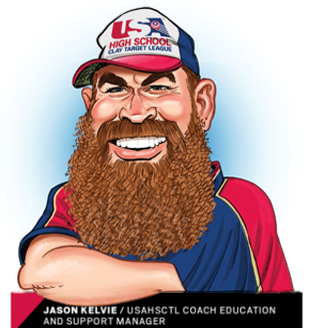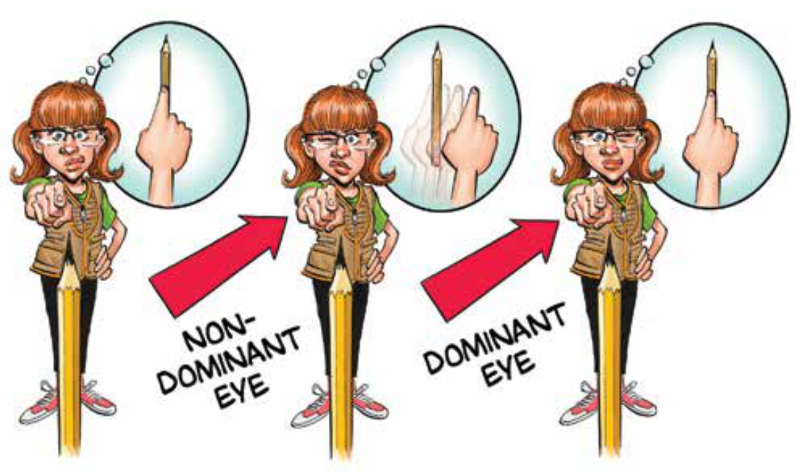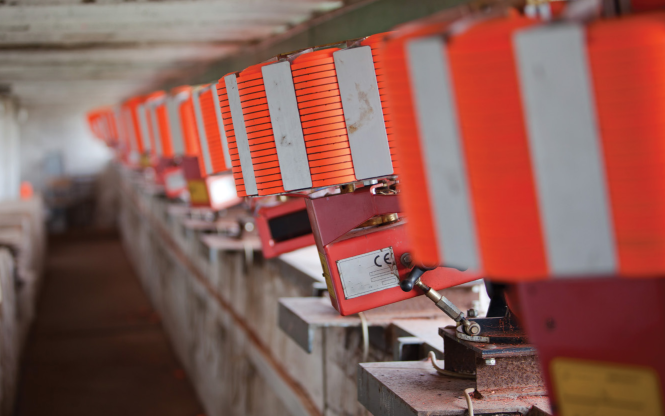Is Your Vision Preventing You From Breaking More Targets?
-By Jason Kelvie. Illustrations by Tom Richmond

Good vision and proper focus are key fundamentals in shooting sports. Vision is something that has plagued shooters for years because, in many cases, the athlete has no idea that they have poor vision of the target. As a coach, you trust that the athletes are telling you the truth when they say they can see the target clearly. Unfortunately all too often I have run across athletes that are missing the target because of poor vision.
Determining Dominance
The place to start with any shooter is determining the dominant eye. The ‘Dominant Eye’ is the eye customarily used for monocular tasks – meaning it’s the eye your brain gives precedence to when focusing or tracking objects – which in our case is aligning our eye with the target flying across the field while looking down the rib of a shotgun. Typically by the age of 10 our brain has determined what our dominant eye is and, to shoot correctly, it becomes our job to identify just which one it is.
Eye dominance is not the same for everyone, but learning which eye is dominant for you can be quickly determined through a brief 30 second test. Start off with both eyes open pointing your finger at a distant object. Next close one eye, open it and close the other eye. Did the object move or stay put as you closed each eye? If your finger continued to point at the object with only one open eye then you know that is your dominant eye. The eye that caused your finger to ‘jump’ off the object is your non-dominant eye.
Once you have established your dominant eye, you can practice pointing at targets as they fly out of the house. This is an excellent exercise because it trains your brain to continually use that dominant eye, helping you get accustomed to relying on that eye to make your shot.
As soon as you become confident in your dominant eye tracking the target you need to make sure that your dominant eye is in correspondence with the hand that you are using to squeeze the trigger. In short if you are right-eye dominant you should be using the finger on your right hand to squeeze the trigger, and, of course, the reverse if you are left-eye dominant. Shooting hand and dominant eye should always line up if practical because this is your best opportunity to have your eyes and head in the right place. An athlete that does not follow this is considered cross-dominant and therefore will struggle aligning the target to their dominant eye.

Shooting with Cross-Dominance
There are two distinct ways we can adjust an athlete’s behaviors of cross dominance. The first – and in my opinion the preferred- is to have the athlete move the shotgun to the shoulder that aligns with their dominant eye. This may feel awkward at first but through consistent practice the athlete should eventually work into a rhythm of breaking targets. The second option is to obscure the vision of the dominant eye by applying a small piece of scotch tape to the inside of the shooting glasses. I have also seen athletes use an eye patch if the scotch tape gives them headaches. Either way by blurring the view of the dominant eye you can force the non-dominant eye to remain focused allowing you to see the target clearly.
One Eye, or Two?
One common concern is whether or not you should keep both eyes open when you shoot. Most coaches will tell you to try shoot with both eyes open since this is your best opportunity to see the entire field – our visual sensitivity and hand-eye coordination increase when binocular vision is employed. Despite this, some people are simply more comfortable using one eye. Once you are comfortable using your dominant eye, practice a few rounds with both eyes open to determine what works best for you.



